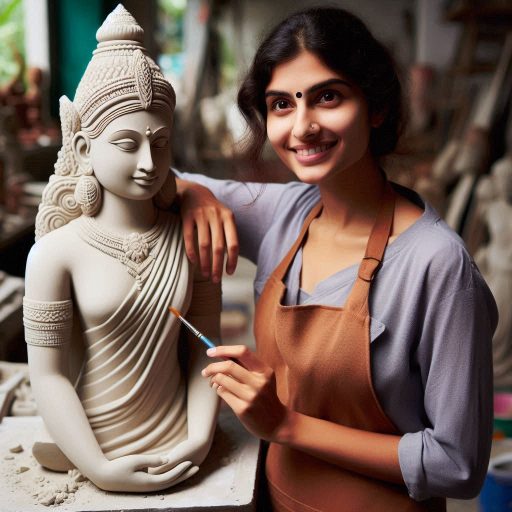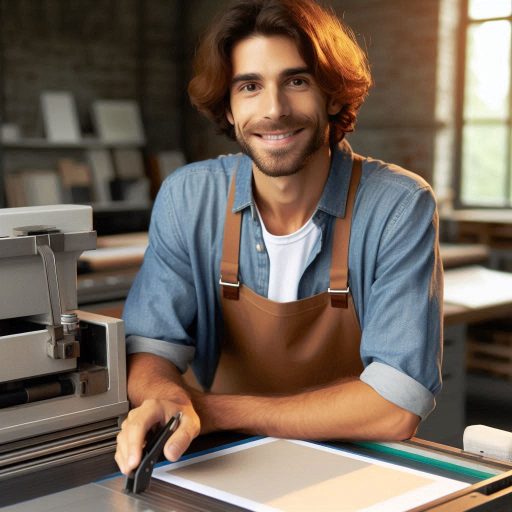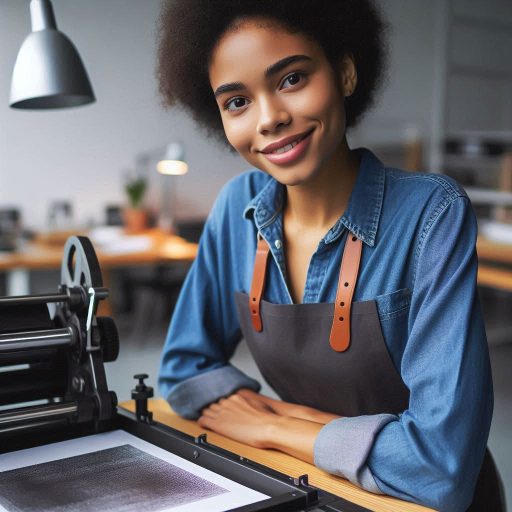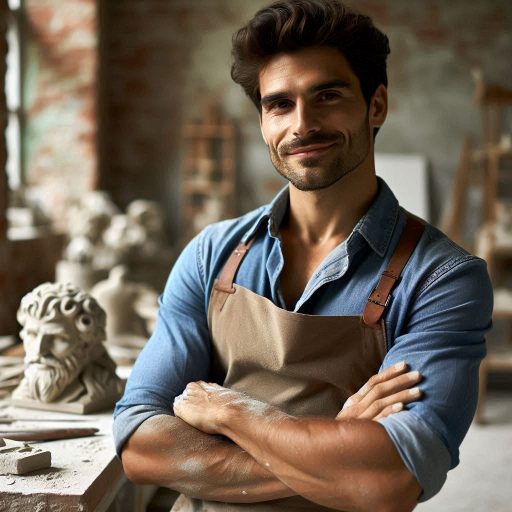Introduction
Printmaking has a long history, from traditional techniques like woodcuts and etchings to the digital age where technology has revolutionized the field.
Despite digital advancements, printmaking remains vital in the art world due to its unique tactile and visual qualities that cannot be replicated digitally.
Technology has made printmaking more accessible and versatile, allowing artists to experiment with new techniques and reach wider audiences.
While digital tools offer convenience, they also pose challenges such as the potential loss of traditional craftsmanship and originality in prints.
Many artists are embracing hybrid approaches by combining traditional and digital methods to create innovative and unique artworks.
Printmaking in the digital age opens up opportunities for collaboration with other art forms such as animation, graphic design, and photography.
Printmakers are exploring eco-friendly practices and materials to reduce the environmental impact of printmaking in the digital age.
Online platforms and social media have transformed the way printmakers market and sell their work, reaching global audiences instantaneously.
Basically, the future of printmaking in the digital age is a dynamic and evolving landscape that offers endless possibilities for artists to innovate and connect with audiences worldwide.
The Evolution of Printmaking
Historical Background of Printmaking Techniques
Printmaking has a rich history that dates back to ancient civilizations.
The earliest form of printmaking can be traced back to the 1st century in China, where woodblock printing was used to reproduce texts and images on silk.
Over time, printmaking techniques evolved and spread to other parts of the world, including Europe, where artists like Albrecht D‘rer and Rembrandt popularized techniques such as engraving and etching.
These traditional printmaking techniques involved carving or etching an image onto a surface, inking it, and then transferring it onto paper or another material using a press. This labor-intensive process required skill and precision.
Advancements in Technology Leading to Digital Printmaking
With the advent of digital technology, the world of printmaking underwent a significant transformation.
Digital printmaking allows artists to create and reproduce their work using computer software and digital printers.
One of the key advantages of digital printmaking is the ability to create precise and detailed images with ease.
Artists can manipulate colors, textures, and shapes digitally, allowing for greater creativity and experimentation in their work.
Digital printmaking also offers artists the flexibility to make changes to their work quickly and easily without the need to start the entire process from scratch.
This streamlines the creative process and allows for more efficient production of prints.
Comparison of Traditional and Digital Printmaking Methods
While traditional printmaking techniques have a long history and are valued for their craftsmanship and authenticity, digital printmaking offers a new set of possibilities and benefits for artists.
Transform Your Career Today
Unlock a personalized career strategy that drives real results. Get tailored advice and a roadmap designed just for you.
Start NowTraditional printmaking methods require specialized tools and materials, as well as physical exertion to create prints.
On the other hand, digital printmaking eliminates the need for physical labor and allows artists to work more comfortably.
In terms of cost, digital printmaking can be more affordable in the long run, as it eliminates the need for costly materials and tools associated with traditional printmaking techniques.
This makes it a more accessible option for artists looking to explore printmaking.
In fact, the future of printmaking in the digital age is bright, with a blend of traditional and digital techniques offering artists a wide range of creative possibilities.
As technology continues to advance, we can expect to see even more innovation in the world of printmaking.
Read: Printmaking Techniques: Woodcut and Linocut
Impact of Digitalization on Printmaking
Accessibility and affordability of digital tools
In the digital age, printmaking has undergone significant changes due to the impact of digitalization.
The accessibility and affordability of digital tools have revolutionized the way artists create and reproduce their work.
Printmakers now have access to a wide range of digital tools that can enhance their creative process and streamline production.
This accessibility has not only made it easier for artists to experiment with new techniques and styles but has also opened up opportunities for collaboration and innovation in the field of printmaking.
Expansion of audience reach through online platforms
Furthermore, the expansion of audience reach through online platforms has transformed the way printmakers connect with their viewers.
With the rise of social media and online galleries, artists can now showcase their work to a global audience instantly.
This has led to increased exposure and recognition for printmakers, allowing them to reach a wider audience beyond their local communities.
The ability to share and promote their work online has also enabled printmakers to build a strong online presence and cultivate a following of art enthusiasts and collectors.
Challenges faced by traditional printmakers in adapting to digital technologies
Despite these advantages, traditional printmakers have faced challenges in adapting to digital technologies.
Many seasoned artists who have honed their craft in traditional printmaking techniques may find it daunting to transition to digital tools and methods.
The learning curve can be steep, and mastering new software and technologies can be time-consuming and frustrating for artists accustomed to working with physical materials.
Additionally, some printmakers may be resistant to embracing digital tools due to concerns about the authenticity and uniqueness of their work in a digital format.
However, it is essential for printmakers to embrace digitalization and incorporate digital tools into their practice to stay relevant in an increasingly digital world.
Transform Your Career Today
Unlock a personalized career strategy that drives real results. Get tailored advice and a roadmap designed just for you.
Start NowBy combining traditional printmaking techniques with digital technologies, artists can push the boundaries of their creativity and produce innovative, engaging work that resonates with contemporary audiences.
Digital tools can enhance the design process, simplify complex printing techniques, and provide new avenues for artistic expression that were previously unattainable through traditional methods.
In short, the impact of digitalization on printmaking has been profound, with both challenges and opportunities for artists in the digital age.
The accessibility and affordability of digital tools have empowered printmakers to explore new creative possibilities and reach a broader audience through online platforms.
While traditional printmakers may face obstacles in adapting to digital technologies, embracing these tools can open up new avenues for artistic growth and innovation.
As technology continues to evolve, printmakers must stay adaptable and open-minded to navigate the changing landscape of printmaking in the digital age.
Read: The Impact of Public Art Sculptures on Communities
Innovation in Printmaking
Exploration of new techniques and materials in digital printmaking
Digital printmaking allows artists to experiment with a wide range of techniques that were previously unavailable in traditional methods.
Artists can now explore techniques such as laser engraving, 3D printing, and digital collage to create innovative and unique prints.
These new techniques open up a world of possibilities for artists to push the boundaries of printmaking and create truly original works of art.
Collaboration between traditional and digital artists
Collaboration between traditional and digital artists is becoming increasingly common in the world of printmaking.
Traditional artists bring a deep knowledge of traditional printmaking techniques and processes, while digital artists bring technical skills and expertise in digital technologies.
By working together, these artists can combine their strengths to create collaborative prints that merge the best of both worlds.
This collaboration not only fosters creativity and innovation but also helps to bridge the gap between traditional and digital art forms.
The fusion of traditional and digital elements in contemporary printmaking
Contemporary printmaking is characterized by the fusion of traditional and digital elements to create hybrid prints that blend the old with the new.
Artists are combining traditional printing methods such as etching and screen printing with digital tools like Photoshop and Illustrator to create unique and visually striking prints.
This fusion of techniques and materials allows artists to create prints that are both technically complex and visually dynamic.
By blending traditional and digital elements, artists are able to create prints that are truly reflective of the digital age we live in.
Preservation of Traditional Techniques
Advocacy for the Preservation of Traditional Printmaking Methods
In the digital age, preserving traditional printmaking methods is crucial.
Many advocate for maintaining these historic techniques, emphasizing their cultural and artistic value.
Transform Your Career Today
Unlock a personalized career strategy that drives real results. Get tailored advice and a roadmap designed just for you.
Start NowArtists and historians often rally for support through exhibitions, workshops, and educational programs.
These efforts ensure that classic practices like woodcut and etching remain relevant.
Organizations and institutions play a pivotal role in this advocacy.
They host events, publish research, and offer grants to sustain these techniques.
Importance of Craftsmanship and Skill in Printmaking
Craftsmanship in printmaking represents a deep-seated tradition.
Mastery of traditional methods demands precision and skill.
Techniques such as intaglio and lithography require meticulous attention to detail.
Printmakers spend years perfecting their craft, blending creativity with technical expertise.
This craftsmanship fosters unique qualities in each print, contributing to their value and significance.
The tactile nature of traditional printmaking also creates a connection between artist and audience.
Revival of Interest in Traditional Printmaking Among Artists and Collectors
Recently, artists and collectors have shown renewed interest in traditional printmaking.
Contemporary artists explore these methods, blending old and new techniques.
Collectors appreciate the historical significance and uniqueness of traditional prints.
This revival is evident in gallery exhibitions, art fairs, and online marketplaces.
Educational institutions also contribute by offering courses in traditional print techniques.
This resurgence reflects a broader trend of valuing handmade, artisanal work in a digital world.
The preservation of traditional printmaking techniques remains vital.
Advocacy efforts, the importance of craftsmanship, and the growing interest among artists and collectors all play significant roles.
As digital technology continues to evolve, these traditional methods stand as a testament to artistic heritage and skill.
Embracing both the old and the new ensures that printmaking remains a dynamic and cherished art form.
Transform Your Career Today
Unlock a personalized career strategy that drives real results. Get tailored advice and a roadmap designed just for you.
Start NowRead: Exploring Printmaking in Public Art Projects

Cultural and Social Implications
Use of Printmaking as a Tool for Social Commentary and Activism
Printmaking has a long history of being used as a powerful tool for social commentary and activism.
Artists have often turned to printmaking as a way to express their views on political, social, and environmental issues.
Prints can be mass-produced, making them an effective medium for spreading messages and starting conversations.
Whether it’s political satire, environmental awareness, or social justice movements, printmaking has been instrumental in raising awareness and inspiring change.
Representation of Diverse Voices in Printmaking
One of the strengths of printmaking is its ability to represent diverse voices and perspectives.
Printmakers have the freedom to explore different themes, styles, and subjects, allowing for a rich tapestry of ideas and viewpoints to be expressed.
By embracing diversity in printmaking, artists can create works that reflect the complexity and richness of our society.
This inclusivity is crucial in giving voice to marginalized communities and shedding light on untold stories.
Influence of Digital Platforms on the Spread of Cultural and Social Messages
The rise of digital platforms has revolutionized the way cultural and social messages are disseminated through printmaking.
Artists now have access to a global audience through online platforms, allowing their work to reach far beyond traditional boundaries.
Social media, in particular, has played a significant role in amplifying the impact of printmaking as a tool for social change.
Artists can share their prints, engage with audiences, and spark important conversations on pressing issues.
The digital age has democratized the art world, enabling diverse voices to be heard and cultural messages to be shared with a wider audience.
Read: How to Market Yourself as a Professional Sculptor
Sustainability and Environmental Impact
When it comes to the future of printmaking in the digital age, one crucial aspect that cannot be ignored is sustainability and environmental impact.
As technology advances and more artists turn to digital printmaking, it’s essential to consider the environmental footprint of these practices.
Environmental footprint of digital printmaking
Digital printmaking has its share of environmental impacts, primarily due to the chemicals and waste generated during the printing process.
Toners, inks, and other materials used in digital printers can have harmful effects on the environment if not disposed of properly.
Additionally, the energy consumption of digital printers is another factor to consider.
Transform Your Career Today
Unlock a personalized career strategy that drives real results. Get tailored advice and a roadmap designed just for you.
Start NowRunning large-scale digital printers requires a significant amount of electricity, which contributes to carbon emissions and overall environmental harm.
Eco-friendly alternatives in traditional and digital printmaking
Despite these challenges, there are eco-friendly alternatives that artists and printmakers can explore in both traditional and digital printmaking.
In traditional printmaking, using non-toxic inks and recycled paper can significantly reduce the environmental impact of the practice.
For digital printmaking, advancements in technology have led to the development of eco-friendly printers that consume less energy and produce minimal waste.
Some printers are even designed to use plant-based inks that are biodegradable and less harmful to the environment.
Initiatives taken by artists and printmakers to promote sustainability in their practice
Many artists and printmakers are taking proactive steps to promote sustainability in their practice.
Some are opting for smaller-scale print runs to minimize waste, while others are investing in renewable energy sources to power their digital printers.
Collaborations with eco-friendly suppliers and manufacturers are also becoming more common, with artists and printmakers seeking out materials and equipment that align with their sustainability goals.
By choosing to work with environmentally conscious partners, they are able to reduce their overall environmental impact.
In general, sustainability and environmental impact are critical considerations for the future of printmaking in the digital age.
By discussing the environmental footprint of digital printmaking, exploring eco-friendly alternatives, and highlighting initiatives taken by artists and printmakers, we can work towards a more sustainable and environmentally conscious practice.
Learn More: How to Market Your Jewelry Design Business
Education and Training in Printmaking
In the rapidly evolving landscape of printmaking, education and training play a crucial role in shaping the future of the medium.
As technology continues to advance, it becomes increasingly important for artists to stay abreast of new techniques and tools.
This section will delve into the integration of digital printmaking in art education programs, explore the opportunities available for artists to learn both traditional and digital techniques, and emphasize the importance of continuous learning and skill development in the field of printmaking.
Integration of Digital Printmaking in Art Education Programs
Art education programs have traditionally focused on teaching traditional printmaking techniques such as etching, lithography, and screen printing.
However, with the advent of digital technology, many institutions are now incorporating digital printmaking into their curriculum.
This shift reflects the growing relevance of digital tools in the contemporary art world and provides students with a more comprehensive understanding of printmaking processes.
By incorporating digital printmaking into art education programs, students have the opportunity to explore new creative possibilities and experiment with innovative techniques.
Digital tools such as Adobe Photoshop and Illustrator enable artists to manipulate and enhance their images in ways that were not possible with traditional printmaking methods.
Transform Your Career Today
Unlock a personalized career strategy that drives real results. Get tailored advice and a roadmap designed just for you.
Start NowThis fusion of traditional and digital techniques allows students to develop a more versatile skill set and adapt to the changing demands of the art industry.
Opportunities for Artists to Learn Both Traditional and Digital Techniques
As the boundaries between traditional and digital printmaking continue to blur, there are now more opportunities than ever for artists to learn and master a wide range of techniques.
Many art schools and workshops offer courses that cover both traditional and digital printmaking methods, providing artists with the flexibility to explore different mediums and approaches.
Learning both traditional and digital techniques not only enriches an artist’s practice but also expands their creative horizons.
While traditional printmaking techniques offer a hands-on and tactile experience, digital tools provide artists with endless possibilities for experimentation and exploration.
By acquiring proficiency in both realms, artists can effectively blend the two worlds to create hybrid works that push the boundaries of the medium.
Importance of Continuous Learning and Skill Development in Printmaking
In a rapidly changing art landscape, the importance of continuous learning and skill development cannot be overstated.
Printmakers must constantly adapt to new technologies, trends, and techniques to remain relevant in the field.
By staying current with advancements in digital printmaking, artists can expand their creative potential and reach new audiences.
Continuous learning also fosters growth and innovation in an artist’s practice.
By actively seeking out opportunities to develop new skills and techniques, printmakers can push the boundaries of their work and challenge themselves to create more engaging and dynamic pieces.
Through workshops, residencies, and collaborations with other artists, printmakers can cultivate a culture of lifelong learning and creativity that propels the medium forward.
In review, education and training are essential components of the future of printmaking in the digital age.
By integrating digital printmaking into art education programs, providing opportunities for artists to learn both traditional and digital techniques, and emphasizing the importance of continuous learning and skill development, the field of printmaking can continue to evolve and thrive in the ever-changing art landscape.
Artists who embrace new technologies and approaches will be well-equipped to navigate the challenges and opportunities that lie ahead, paving the way for a vibrant and dynamic future for printmaking.
Future Prospects and Trends
As we look towards the future of printmaking in the digital age, there are several key areas to consider.
Speculation on the future direction of printmaking in the digital age
The digital age has opened up a world of possibilities for printmakers.
With advancements in technology, we can expect to see even more innovative techniques and processes emerge.
Traditional printmaking methods may continue to evolve and adapt to the digital landscape, creating new avenues for experimentation and creativity.
One potential direction for printmaking in the digital age is the integration of traditional and digital techniques.
Transform Your Career Today
Unlock a personalized career strategy that drives real results. Get tailored advice and a roadmap designed just for you.
Start NowArtists may combine traditional printmaking processes with digital tools and software to create hybrid forms of art that push the boundaries of the medium.
Emerging trends in printmaking technology and techniques
Advancements in printmaking technology have already revolutionized the way artists create and reproduce their work.
From digital printing to 3D printing, artists now have access to a wide range of tools and techniques that were once unimaginable.
One emerging trend in printmaking is the use of environmentally friendly materials and processes.
With a growing emphasis on sustainability and eco-conscious practices, many printmakers are exploring new ways to reduce their environmental impact while still producing high-quality work.
Potential challenges and opportunities for printmakers in adapting to a rapidly changing art landscape
As the art world continues to evolve, printmakers face both challenges and opportunities in adapting to the changing landscape.
One challenge is the increasing competition from digital artists and other forms of digital media, which can make it harder for traditional printmakers to stand out.
However, there are also opportunities for printmakers to embrace new technologies and techniques to stay relevant and innovative.
By experimenting with new tools and processes, printmakers can explore new creative possibilities and reach a broader audience.
In a nutshell, the future of printmaking in the digital age is full of potential and excitement.
With the right combination of traditional craftsmanship and digital innovation, printmakers can continue to push the boundaries of the medium and create truly groundbreaking work.
Conclusion
It is evident that printmaking has evolved to embrace digital technology.
Traditional and digital printmaking are interconnected, with each complementing the other to produce innovative and unique artworks.
Through this blog post, we have highlighted the benefits and challenges of digital printmaking, as well as the ways in which traditional techniques can coexist and enhance the digital process.
The creative possibilities are endless when artists combine both methods in their work.
For artists and art enthusiasts, the call to action is clear: embrace the evolution of printmaking in the digital age.
Experiment with new technologies, learn and adapt traditional techniques, and push the boundaries of what is possible in the realm of printmaking.
The fusion of traditional and digital processes opens up exciting opportunities for artists to create dynamic and impactful artworks.
By staying open to new ideas and techniques, artists can continue to innovate and push the boundaries of printmaking in the digital age.
It is through this openness and willingness to explore that the future of printmaking will continue to thrive and evolve.
Transform Your Career Today
Unlock a personalized career strategy that drives real results. Get tailored advice and a roadmap designed just for you.
Start Now



